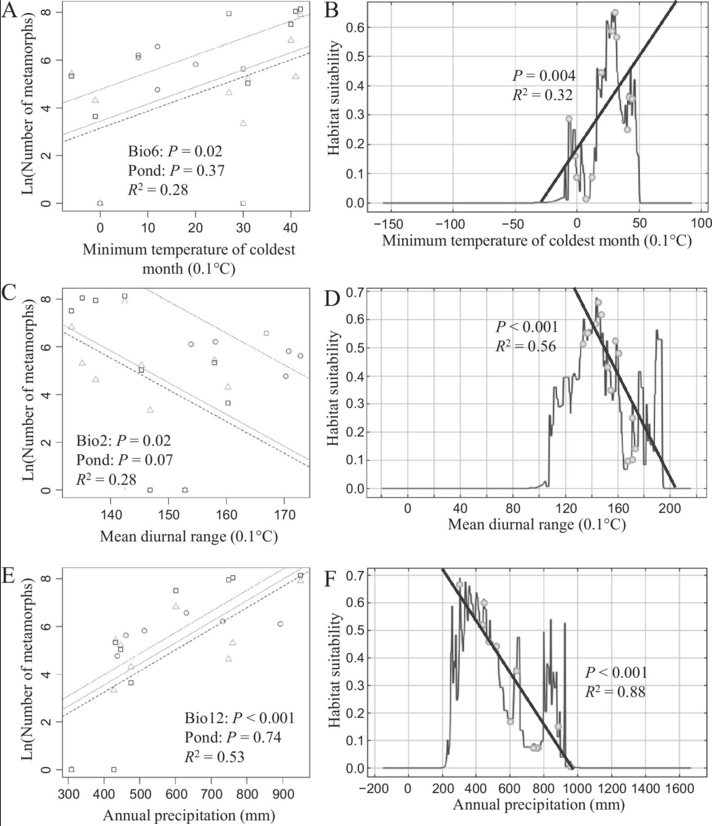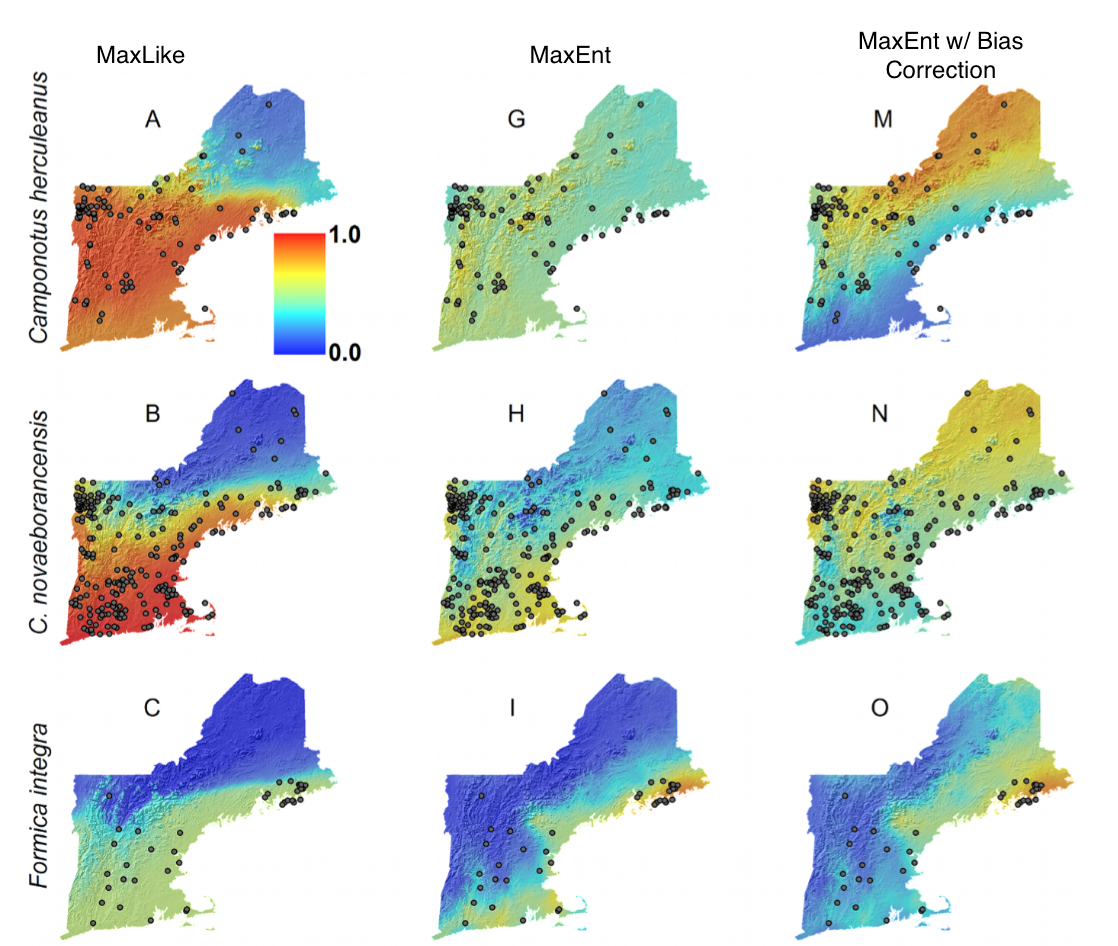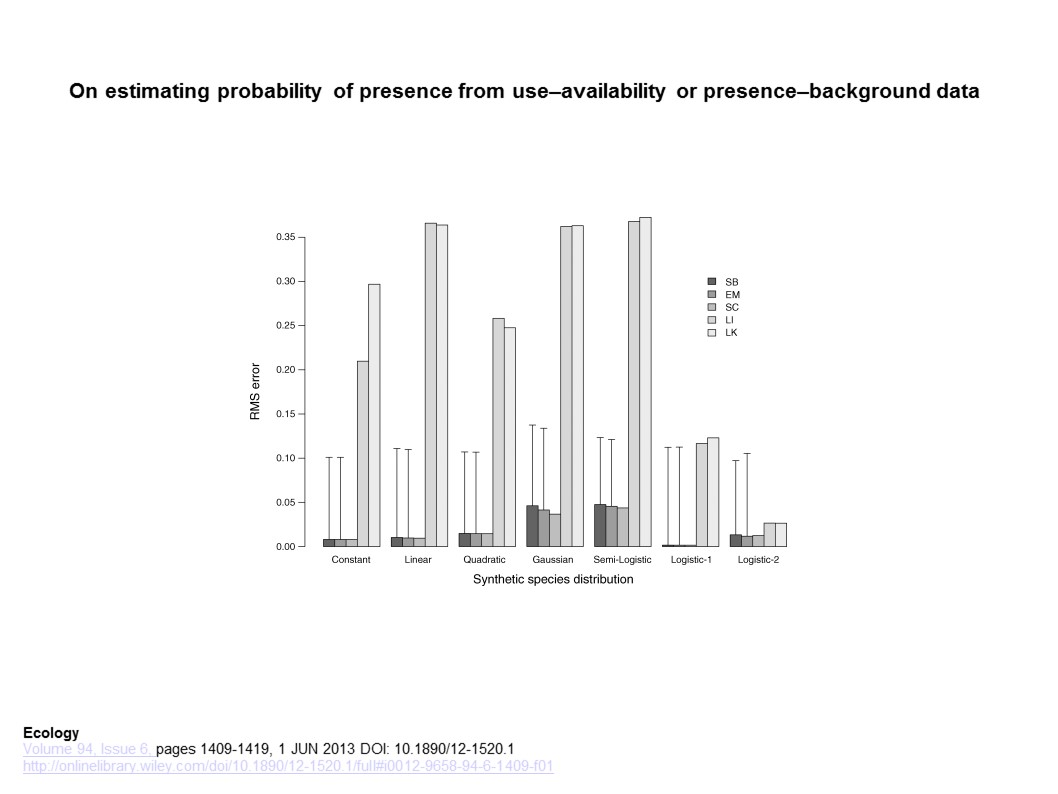Essl, F., Dullinger, S., Rabitsch, W., Hulme, P. E., Hulber, K., Jarosik, V., et al. (2011). Socioeconomic legacy yields an invasion debt. Proceedings of the National Academy of Sciences, 108(1), 203–207. http://doi.org/10.1073/pnas.1011728108
Human activities play a large role on the distribution of species, however, this relationship is often characterized by a time lag. One such relationship is the “extinction debt” in which a species is “committed” to extinction following fragmentation or disease, but is not yet extinct. A similar phenomenon may occur for an invasive species before it becomes established, described by the authors as an “invasion debt”. To test the hypothesis of the existence of an “invasion debt” due to anthropogenic activities, Essl et al. compared two spatially explicit models relating socioeconomic activity in current (2000) and historical (1900) time periods to current invasive species richness, with superior model performance by the historical model as evidence of an invasion debt. The study focused on invasive species of Europe, studying ten taxonomic groups, both individually and aggregated, in twenty-eight countries. In order to correct for correlation of socioeconomic variables, the authors created three PCA axes for the three variables, however, they still found the axes to be highly correlated over time (ie wealthy countries in 1900 were wealthy in 2000, which is to be expected). When considering an aggregation of all ten taxonomic groups of species richness as the response variable, Essl et al. used a linear mixed effects model, accounting for spatial autocorrelation with an “exponential within-group correlation structure”. This seems to be a correction to the response variable itself, which Beale et al. showed to reduce a model’s precision, however there is not enough detail in the methods for me to be sure. Spatial autoregressive models were fit for individual taxonomic groups using countries’ capitals as the spatial locations, correcting for correlation in the error term using a neighborhood matrix. The geographical location of a capital seems to be a very coarse measurement, yet it does match the national scale of the species richness data and capitals, being trade hubs, may be likely introduction points for many invasive species. The model of all ten groups combined found the historical model to have a lower AIC score. Combined with the fact that most species introductions occurred after 1950, this suggests the presence of an invasion debt. This seemed somewhat counterintuitive, however, I believe the authors view the invasion debt not as the time between an introduction and establishment, but as a “legacy effect” that may make an area more prone to invasion, perhaps through an increase in invasive pathways or habitat disturbance and fragmentation. Interestingly, when subdivided into taxonomic groups, reptiles and birds show the opposite relationship and are better predicted by the more recent socioeconomic PCA axes, which may be caused by the role of the pet trade, a more recent establishment, in their invasion success.
Food for Thought: This paper brings two things to mind with regards to 8910. First, that legacy effects may be an important aspect to consider when modeling the potential distribution of invasive species. For example, if historical economic activity is shown to be a predictor of current species distributions, more recent activity may increase accuracy of future distributions. Second, this study seems to incorporate spatial correlation in a way opposite to that recommended in Beale et al. 2010. This leads me to wonder if they are correcting for spatial correlation incorrectly, or if the principles used in SDM are not generally applicable to other types of spatial data.




